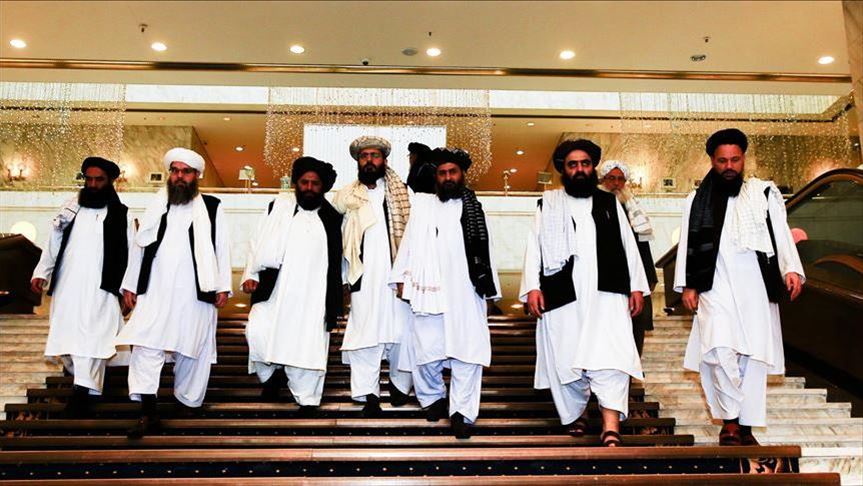STRAIGHT TALK by Hafeez Khan
It was early 70’s and my friend, late Ajmal Malik, had landed a job with the information department in Peshawar. A brilliant mind, he was a successful journalist and a carefree loving soul. We communicated via booking trunk calls thanks to Ajmal’s access to official phones. We chatted regularly reminiscing our University days.
After the 71 war, Indian films were banned in Pakistan. One day Ajmal, “Malik sahib” for friends, invited me to Peshawar for an onward trip to Kabul. “The film Pakeezah is playing in theatres there” was enough to convince me. Not having a passport was overcome by Ajmal arranging a ‘Red Pass’. The same night I boarded Khyber Mail to Peshawar.
After a day in Peshawar we left for Kabul on a GTS bus. It was a fascinating journey weaving our way through the historical Khyber Pass. Passing through steep mountains and rugged terrain was a daunting experience. The journey ended when we entered the Kabul valley and skies opened up. It was autumn and evening air was crisp.
Our hotel was downtown Kabul. It was full of life with multiple young free spirited European tourists mulling around. The city seemed to permeate excitement. We were there for three days. We went to movies, toured the city, visited the Royal Palace areas open to public and visited Kabul University. My credentials as a student leader helped us interact with students and teachers.
Inter Continental Hotel Kabul was located on higher grounds from where we were able to view the whole city with river Kabul meandering through it. Kabulis were friendly with many speaking Urdu and English. Ajmal met some journalists and we had wide ranging discussions. In our interactions I sensed underlying tensions between leftists and rightists, nationalists and Islamists.
Afghanistan has a proud heritage and history. It emerged in its modern form shaped by the 19th century competition between British, Russian and Persian empires. The 1907 Anglo-Russian Convention created the existing boundaries of Afghanistan as a buffer state between competing Empires. The eastern boundary was demarcated by Sir Henry M. Durand, a British official in 1893 known as Durand Line. It divided Pushtun tribes into two countries leading to a “Greater Pashtunistan” dispute.
The diversity of Afghans is quite complex based on ethnic, linguistic or tribal variations. Pushtuns are 38% in the East, Tajiks are 25% in the North, Hazaras 19% in the Center. They comprise bulk of the population with Turkmans, Baluch, Uzbek and some others completing the count. Dari, a dialect of Persian, is spoken by half the population while Pashto is spoken by Pushtuns. Both are official languages. Roughly 70% are Sunni Muslims and 25 to 30% are Shias. Add to that the tribal mix and affiliations and you get the picture.
Afghanistan was ruled by King Zahir Shah from 1933 to 1973. He was largely pro West. I saw a peaceful and calm society. However, trouble was brewing. His restive cousin Daoud, who was Prime Minister for 10 years, overthrew him in 1973 declaring Afghanistan a republic. President Daoud leaned towards Soviet Union. He found an ally in Soviet Premier Breznev who believed in Third World activism. He chose to rely on Communist leaders rather than backing non-communist nationalists.
It was a Pandora’s Box. The underground movements that I had sensed came out in the open. On one side it was Soviet backed People’s Democratic Party (PDPA) with its Khalq and Parcham factions. On the other side Pakistan backed Islamists. Soviets had become bolder after USA’s Vietnam ouster.
In 1978 Conflict erupted after assassination of a Parcham leader. There were massive demonstrations led by PDPA. Army officers sympathetic to it staged a coup and ousted Daoud. Soviets welcomed the change through a massive influx of aid. President Hafizullah Amin tried to implement his Khalq agenda through brute force. He failed. Infighting between Khalqis and Parchamis disintegrated the state control and Afghan society. The Soviets in December 1979 removed the façade and rolled into Afghanistan. They stormed the Palace and executed President Amin.
Having lost their staunchest ally in Iran, USA sought to engage in Afghanistan. The Islamists who had attempted a failed coup a few years earlier were in exile in Pakistan. The nucleus for Mujahidin already existed. Resistance to Soviet occupation grew. It was a bloodbath in which millions of Afghans perished in the next decade. The peaceful Kabul that I witnessed degenerated into chaos. The Soviets knew one way to quell resistance; by crushing it.
They failed to realize that when an Afghan picks up a gun there are only two ways to resolve the situation. Kill or be killed, freedom or heaven. The rugged Mujahid once armed, needed very little to survive on. A bag of chick peas, a bottle of water and rags tied around their feet sufficed.
In the mid eighties, my business partner Abdul Latif Al Sheikh and I flew to Islamabad from Riyadh. We had some Saudis in the business class. They were scions of notable families. He started to chat with them. They were headed to join the Afghan resistance with Attock as their destination. They invited us over. A couple of days later we visited their camp. Over a few hours what I saw is ingrained in my memory forever.
To be continued ….


Leave a Reply